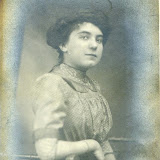Why do we hate Pictorialism?
"I don’t know anything about art, but for some reason or other I have never wanted to photograph the way you paint.”
Alfred Stieglitz
“Pictorialism,” the narrator of the BBC’s 2007 series, The Genius of Photography declared, “was photography at its most po-faced.” Well, yes, but so what? Artists frequently take themselves too seriously and become the butt of jokes. The Pictorialists were a sombre bunch. They also believed they were at the vanguard of modern art when what they produced often looks to us like cheap copies of the worst that came out of the academic painting salons. Still, dismissing them as dull and humourless is unfair; a little like saying that Dostoevsky would have been a great writer if he had cracked a few more jokes. He didn’t so regretting their absence is beside the point.
One problem with Pictorialism is that it very quickly became associated with a handful of categories, landscapes and nudes especially, as though art was still about natural beauty at a moment when genuinely progressive artists were thinking about machines and technology as the defining characteristics of the future. Another is that it outlived its welcome by much too long. Into the 1940s and ‘50s some photographic magazines still judged the artistic qualities of photographs on their Pictorialist elements. It’s hard to look at some of that work now without wondering if there was a deliberately perverse decision to stay behind the times. A third problem is that it was never about revealing some essential truth in the subject. That idea is perfectly acceptable now but during the Pictorialist era the entire point of photography was it revelatory power. Even the rawest Kodak amateur in the 1890s seemed to be saying more about the real world than the most seasoned Pictorialists.
The really great thing about Pictorialism is that 20th century modernist photography couldn’t have existed without it. Most of the Americans who became associated with Modernism; Alfred Stieglitz, Paul Strand, Alvin Langdon Coburn, Gertrude Käsebier etc, began as Pictorialists and the shift wasn’t that profound or disruptive. A more obscure photographer to look up is Marjorie Content, whose work from the 1920s comes from the moment one movement was evolving into the other. It’s as though a fog is lifting and the world is gradually coming into focus.
There are some classic examples but no great Pictorialist works in this gallery. Not surprising really; although quite a few historians dismiss Pictorialism as conservative, authoritarian and vapid, they’ve obviously had little influence on the art market. The 2006 sale of Edward Steichen’s The Pond – Moonlight for nearly 3 million US broke records and inevitably dragged up the value of his contemporaries. No one really believes the upper echelons of the art market are inhabited by people of good judgement and taste but they do have power and they have decided that Pictorialism really matters after all.
 |
| PICTORIALISM |




No comments:
Post a Comment
Add comments here